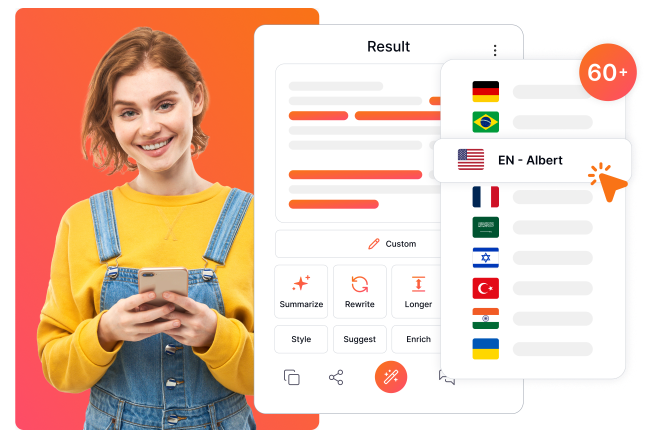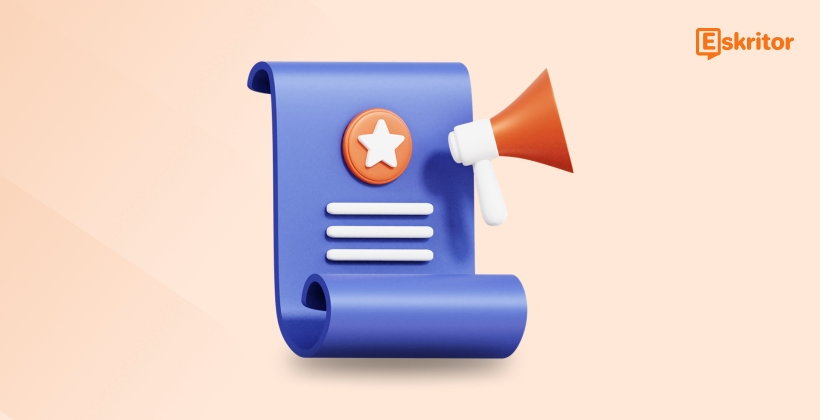The Future of AI Writing Technology Explained
The Future of AI Writing Technology Explained
Blog Article
Effortless Precision with AI Editing Solutions
Artificial intelligence (AI) writing technology has evolved quickly over the past decade, reshaping the way in which we produce and connect to published content. From syntax modification tools to AI-generated novels, the options seem limitless. But wherever just is this engineering going? Let's discover the innovations, problems, and potential potential of AI Editing.

How AI Writing Engineering Operates Nowadays
At their core, AI writing engineering utilizes Natural Language Handling (NLP) and device learning. These systems enable models to comprehend, generate, and increase individual language. Tools available today master responsibilities like:
1. Material Generation
AI has reached a spot where it can generate complete blog articles, social media marketing sayings, and also news articles. Some models are capable of mimicking human writing styles so efficiently that distinguishing between AI- and human-written material has become significantly difficult.
2. Syntax and Fashion Idea
AI-powered writing assistants don't only always check for grammar and punctuation mistakes; they also give ideas to improve tone, understanding, and syntax, creating complicated writing accessible to a wide audience.
3. Message Evaluation
AI can examine the psychological tone of a piece, allowing firms to assess how their communications may resonate with readers. That is especially helpful in marketing and customer interaction.
The Current Developments in AI Writing Technology
Several trends are shaping another stage of AI-powered writing instruments:
• Personalization
AI publishing engineering is significantly capable of tailoring material to specific preferences. Types can adjust to a user's publishing design, ensuring the result feels authentic.
• Multilingual Functions
Many AI resources are expanding their global achieve by providing improved interpretation characteristics and help for multiple languages.
• Increased Research Functions
AI methods today possess the capacity to analyze huge levels of information and present fact-checked, well-researched publishing in moments, simplifying the method for experts in industries like law, money, and journalism.
What the Potential Keeps for AI Writing Engineering
1. Improved Imagination
While recent AI is adept at generating content, its imagination is still limited to styles within its instruction data. Potential AI is not only estimated to aid but to create original, insightful performs that concern human imagination.
2. Seamless Venture
Imagine an AI that operates along with you in real-time, doing your sentences, doing live edits, and actually brainstorming ideas. AI writing tools may possibly shortly become co-authors, enabling imagination to flow uninterrupted.
3. Honest and Accessible Style
With growing problem about plagiarism, misinformation, and opinion, designers will work toward more clear AI instruction procedures and moral implementation. Potential instruments will more than likely offer more comprehensive citations and methods to ensure accountability.
Challenges and Criteria
The development of AI publishing technology is not without hurdles, including:
• Honest Problems

Who possesses content developed by AI? Just how can we assure AI-generated material isn't spreading misinformation? These debates stay unresolved.
• Human-AI Harmony
Can AI complement human creativity or totally change specific tasks? Many authors and artists be worried about their relevance within an AI-driven world.
• Convenience Divide
Not all companies or regions have equivalent access to cutting-edge AI instruments, raising issues in regards to the influence of this technology on world wide inequality.
Adjusting the Way We Create
AI publishing engineering remains in its infancy in comparison to its potential. Whether you're students creating documents, a content marketer targeting certain audiences, or a author seeking enthusiasm, AI tools will continue steadily to revolutionize the writing process. Another decade promises breakthroughs that mix human ingenuity with unit intelligence, making a potential wherever publishing is more efficient, accessible, and impactful than ever before.
Report this page